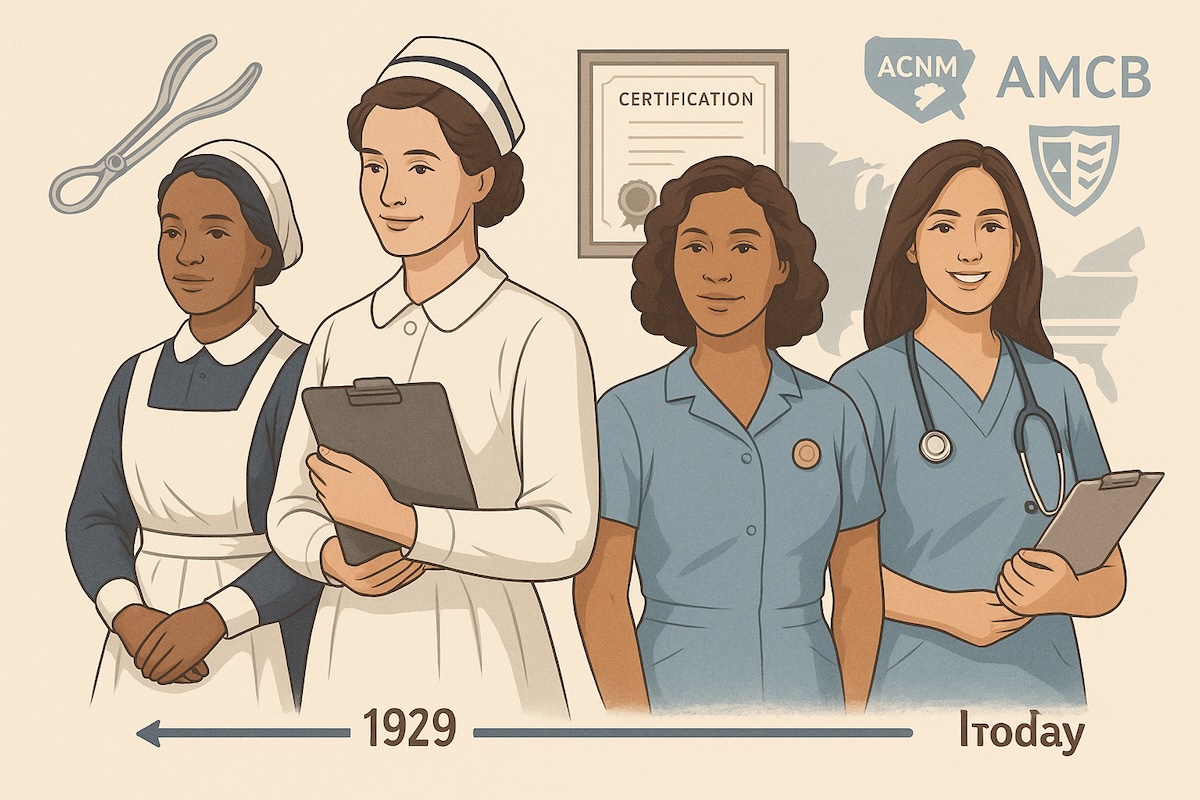The American College of Nurse-Midwives (ACNM) and the American Midwifery Certification Board (AMCB) are pillars in the professionalization of nurse-midwifery in the U.S. Their journey, from community-based care to nationally certified healthcare practice, illustrates the power of organization, advocacy, and standards in elevating maternal and infant healthcare.
Timeline: Key Milestones in Nurse-Midwifery History
| Year | Milestone |
|---|---|
| 1929 | Kentucky State Association of Midwives was founded |
| 1949 | NOPHN publishes first national data on nurse-midwifery |
| 1955 | ACNM was officially incorporated as a national body |
| 1971 | First CNM certification exam offered by ACNM |
| 1990 | ACNM Certification Council (ACC) was established |
| 2005 | ACC renamed to AMCB—an independent certification board |
Early Roots and Colonial Midwifery
Midwifery in the U.S. dates back to the 1600s, when women like Bridget Fuller and Ruth Barnaby delivered hundreds of babies in early colonies. Though respected, midwives were unlicensed and informally trained.
The Push Toward Professionalization
In the early 1900s, midwifery faced marginalization. The formation of the Kentucky State Association of Midwives in 1929 and nurse-leaders like Mary Breckinridge began pushing for formal training and national unity.
Establishing the ACNM
In 1955, after momentum built at the 1954 ANA convention, the ACNM was formally incorporated with just 124 members. The group began creating national standards for education, advocacy, and licensing. Membership grew rapidly in the 1970s and 80s, reflecting the growing credibility of the profession.
Birth of the AMCB
Initially, the ACNM handled both membership and certification. However, in 1990, the ACC (now AMCB) was established to oversee testing and credentials independently. In 199However 2005, the AMCB was established and is entirely separate from the ACNM. Today, it manages certification for both CNMs and CMs.
Modern Impact and Collaboration
The ACNM continues to lead in education, advocacy, and professional standards. Their strategic priorities from 2024–2026 emphasize equitable maternal outcomes and community-centered midwifery. Meanwhile, the AMCB ensures certified midwives maintain skills through periodic renewal, protecting public safety and professional credibility.
Explore More:
Conclusion
What began as informal care by colonial women evolved into a nationally recognized medical specialty, thanks to decades of leadership from the ACNM and AMCB. Their structures help ensure that midwifery practice today is consistent, credentialed, and centered around public health. Understanding this history is vital for any RN pursuing a future in advanced midwifery care.
FAQs
- What is the ACNM?
- The American College of Nurse-Midwives represents midwives professionally, setting educational standards and advocating for the profession.
- What is the AMCB?
- The American Midwifery Certification Board certifies CNMs and CMs through national exams and ongoing recertification.
- When did midwifery certification begin?
- The first CNM certification exam was held in 1971 and administered by the ACNM.





